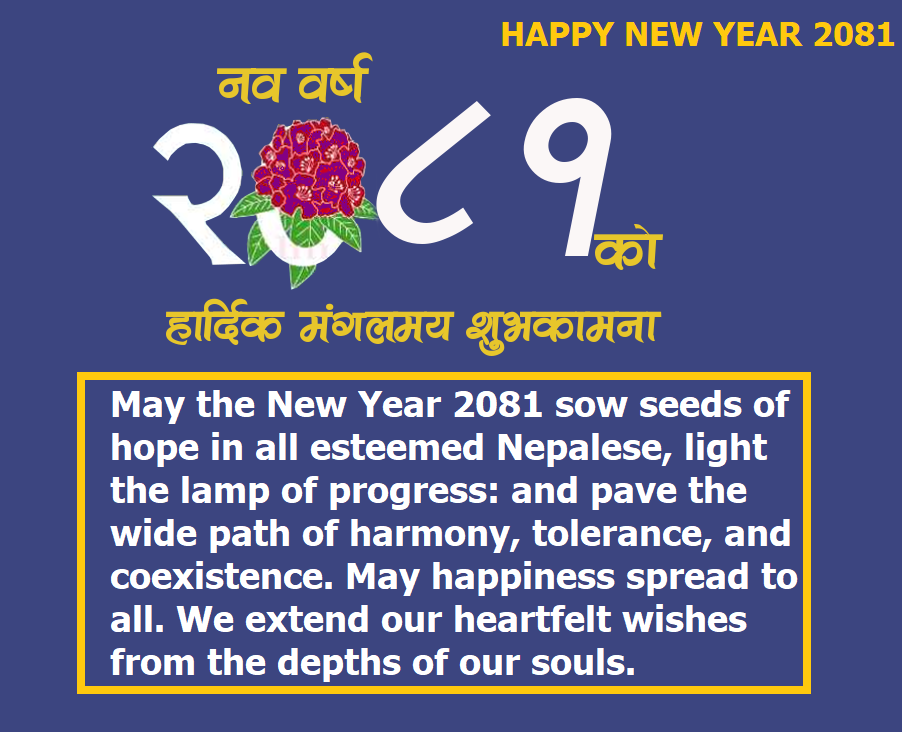
Celebrating Nepali New Year 2081: Traditions, Innovations, and Community Spirit
Introduction
Nepali New Year, known as "Navavarsha," is a time of jubilant celebrations, rich traditions, and communal harmony. As we approach the year 2081 in the Bikram Sambat calendar, it's an opportunity to reflect on the past and look forward to the future with optimism and joy. This article explores the unique aspects of the Nepali New Year, incorporating both the traditional elements and the modern innovations that make this festival a cornerstone of Nepalese culture.
Understanding Navavarsha: The Nepali New Year
Historical and Cultural Significance
- Cultural Integration: Navavarsha marks the beginning of the Bikram Sambat calendar, a solar calendar that is integral to Nepalese culture. It is celebrated across the country with various local festivities that highlight Nepal’s diverse cultural mosaic.
- Zodiac Influence: Each New Year is associated with one of the 12 zodiac signs, which plays a significant role in the festivities and rituals performed.
Traditional Celebrations
- Bisket Jatra: Observed in Bhaktapur, this festival includes a massive tug-of-war, chariot processions, and cultural dances, symbolizing the mythical battles between gods and demons.
- Mha Puja: A New Year ritual where people worship themselves, promoting self-purity and readiness for the year ahead.
Innovations in Celebration
Technology Meets Tradition
- Virtual Reality Experiences: For Nepali expatriates and others around the world, VR platforms now offer a way to virtually participate in New Year’s processions and temple visits.
- Online Cultural Exchanges: Platforms that allow Nepalese communities globally to share their local Navavarsha celebrations, fostering a sense of unity and shared cultural heritage.
Green Initiatives
- Eco-Friendly Festivities: Increasing use of biodegradable materials in decorations and a shift towards digital greetings reduce the environmental footprint of New Year celebrations.
Community and Global Participation
Inclusivity and Global Outreach
- Expanding Celebrations: While centered in Nepal, Navavarsha is celebrated by Nepalese communities worldwide, showcasing their rich traditions and fostering global connections.
- Community Service and Charity Events: New Year is also a time for philanthropy, with many community groups organizing charity drives and service projects to help the less fortunate, reinforcing the values of community and shared prosperity.
Future Prospects
- Tourism and Cultural Promotion: Nepal leverages Navavarsha to boost tourism, inviting international visitors to experience its unique culture and hospitality during the New Year festivities.
Educational Aspirations for 2081
Investing in the Future Through Education
- Enhanced Learning Technologies: In the year 2081, we wish for continued advancements in educational technologies that enrich learning experiences for students across Nepal.
- Scholarship Programs and Educational Grants: Expanding scholarship opportunities for underprivileged youth and launching more comprehensive educational grants will ensure that all Nepali children can envision a brighter future.
- Focus on Practical and Sustainable Education: Developing curriculums that include practical skills, sustainability, and environmental stewardship will equip the next generation to tackle the challenges of the future effectively.
Conclusion
As we embrace Nepali New Year 2081, we are reminded of the enduring spirit of Nepal’s people and their ability to blend tradition with modernity. Navavarsha is not just a celebration of the New Year but a reaffirmation of national identity and cultural pride. With each passing year, Nepalese around the world continue to innovate while preserving the essence of this cherished festival, looking forward with hope and excitement to the future.




